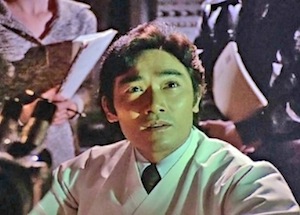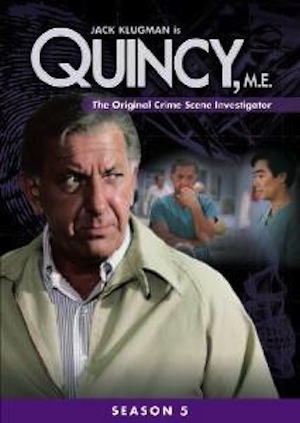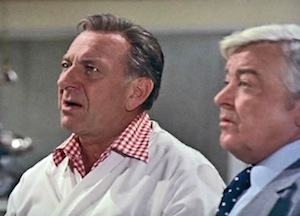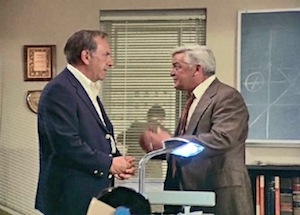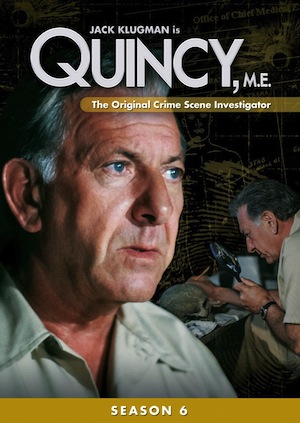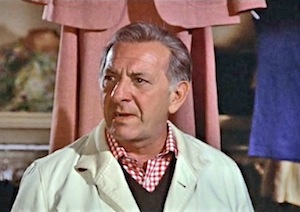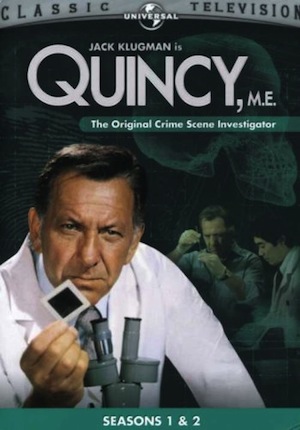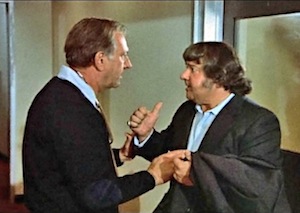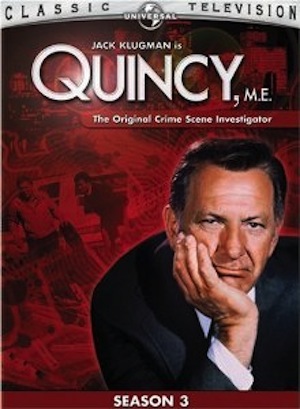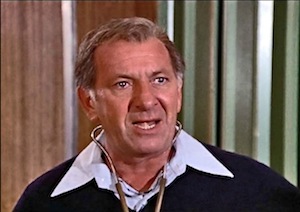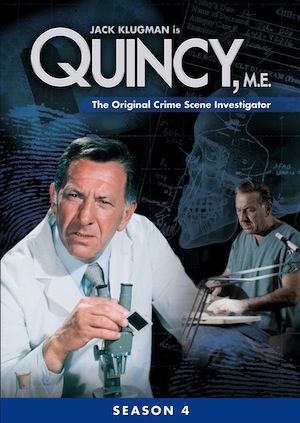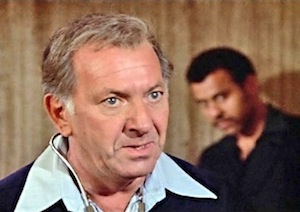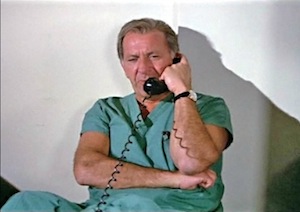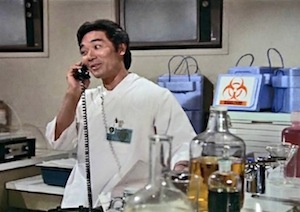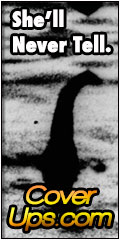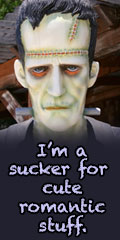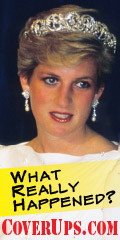Quincy M.E.
The Granddaddy of Forensic Television Mysteries
There never was an actor with less Hollywood Hunk appeal than Jack Klugman. Yet, Klugman's craggy features and annoyingly nasal whining attracted legions of fans when the veteran actor assumed the role of the passionate Dr. Quincy, a firebrand Medical Examiner. Dr. Quincy wasn't content to simply carve up corpses and file his report. He had to solve the crimes that brought the victims into his morgue.
See the Quincy, M.E. Show Intro
The television show premiered in the fall season of 1976 and ran for seven years on NBC. Quincy is still in syndication today despite its rather dated look and now antiquated science.
Most of the show's episodes were straightforward stuff. A death has taken place and everyone but Dr. Quincy wants to conclude that the dearly departed left this world due to natural causes. Wait a minute. Not so fast. Quincy thinks that there is something fishy (if not downright murderous) going on and before you can blink an eye, the medical examiner has swapped his lab coat and microscope for a deerstalker cap and a magnifying glass a la Sherlock Holmes. Finding questions surrounding a death that the cops or D.A. didn't seem too concerned about, Quincy would inevitably charge out of his lab in Los Angeles, hot in pursuit of tracking down clues to bring justice to the victim or victims in question.
Each episode always included an outburst or two from Dr. Quincy along with righteously indignant finger-pointing lectures. Abrasive and belligerent, Quincy aggressively stood up to his careworn boss, Dr. Asten (John S. Ragin) who fruitlessly called for Quincy to have a calmer head. No matter what warning or plea for Quincy to back off of a case was given, the hot-headed coroner would rush out of the lab, leaving his stalwart assistant, Sam Fujiyama (Robert Ito) to complete the autopsy and/or run forensic tests to prove Quincy's theories of whodunit.
Other thorns in Quincy's side were police Lt. Frank Monahan (Garry Walberg) and Sgt. Brill (Joseph Roman). Somehow, Dr. Quincy could never quite understand that the cops wanted to solve cases on their own, without the good doctor's interference.
When he wasn't tracking down clues, Quincy lived aboard his houseboat, hung out at Danny's Pub or was on the lookout for hot dates with numerous lady friends. Why any woman would be attracted to an old curmudgeon of a coroner was beyond the scope of our imagination but, hey, it was the Swinging '70's and we can only guess that the show's creator, Glen Larson, thought that he'd spice up the scripts with some soft sex appeal.
 The show was loosely patterned after the career of Dr. Thomas Noguchi, the so-called 'Coroner to the Stars'. Noguchi made a name for himself in Hollywood by investigating and giving evidence in the mysterious death of Marilyn Monroe and, more recently, was a 'featured player' in the O.J. Simpson trial debacle which mesmerized television viewers for months on end.
The show was loosely patterned after the career of Dr. Thomas Noguchi, the so-called 'Coroner to the Stars'. Noguchi made a name for himself in Hollywood by investigating and giving evidence in the mysterious death of Marilyn Monroe and, more recently, was a 'featured player' in the O.J. Simpson trial debacle which mesmerized television viewers for months on end.
While scripts for Quincy, M.E. used forensic techniques to catch criminals, the shows' focus increasingly turned to societal issues. Much of the dialogue was more akin to quasi-political stump speeches by Jack Klugman against gun ownership, rants about drunk driving or raising the alarm about protecting the environment from toxic waste. Viewers probably wished for more of a good mystery than a social issues lecture but, nonetheless, the show continues to garner a sizeable audience in re-runs.
Quincy, M.E. has been credited with spawning the current crop of forensic-focused television shows like C.S.I. and the show is still entertaining to watch when you've had it up to here with trendy special effects and long for a good old-fashioned mystery.
